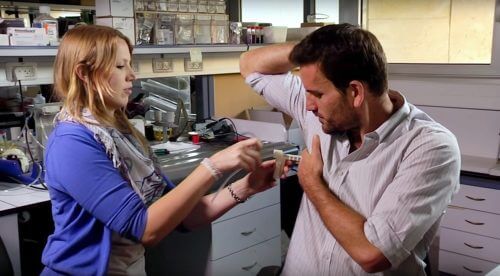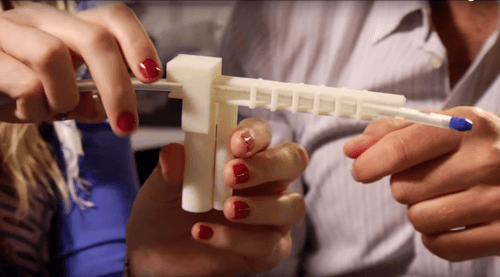A development by the Hebrew University significantly shortens the initial and decisive treatment time for stabbing and gunshot victims in the chest

Members of Biodesign, the entrepreneurship program for accelerating medical innovation of the Hebrew University of Jerusalem in collaboration with the Hadassah Medical Center, joined the challenge of finding a life-saving solution to a medical emergency known as a pneumothorax.
According to estimates, pneumothorax is one of the main causes of death as a result of gunfire, and is the cause of more than a third of preventable deaths on the battlefield.
The lung, which is responsible for supplying oxygen to the blood, is surrounded by the pleura - a two-layer lung membrane that connects the operation of the lung volume to the operation of the expansion and contraction of the thorax. As a result of a traumatic injury - among others, a knife stab, a shooting, a car accident, the page - the pleural space between the inner and outer membrane is damaged, trapped air enters it and stops the operation of the lung and the transfer of oxygen to the blood. This state of respiratory insufficiency may be life-threatening and can lead to the collapse of the victim.
The medical treatment provided today includes two stages: the insertion of a needle in the front of the chest to drain the lung, and immediately after, a process lasting about 15 minutes, during which an intercostal drain is inserted to drain air and blood and to heal the pleura, allowing the lung to return to its normal function.
"This is a very tedious and technically difficult procedure, leading the medical care providers at the scene to neglect the second stage in favor of a quick evacuation to the hospital," says Dr. Ariel Drori, an expert in internal medicine at the Hadassah Medical Center.
Dr. Drori is a friend of Yoav Kantor and Binita Ndorp, engineering students at the Alexander Grass Center for Bioengineering at the Hebrew University, Dr. Liran Levy, a lung specialist from the Hadassah Medical Center, and Chen Goldstein, a graduate student in business administration at the Hebrew University. Together they developed Thorax (ThoraXS).
Thorax is a device that shortens the procedure for inserting the intercostal drain into the pleural space from a few minutes to about 30 seconds. Its shape allows the care givers to stably insert the tube into the pleural space with one hand and with the other hand to insert the drain through it in a simple and quick way until the membrane is closed. Thus, Thorax provides a quick, one-step, life-saving solution in the field of civilian and military emergency medicine.
Prof. Jacob Nachmias, director of the Alexander Grass Center for Bioengineering at the Hebrew University, explains the connection between the field of innovation and the battlefield: "Our students responded to the terrorist attacks by developing life-saving medical equipment. This approach is the essence of the biodesign program for medical innovation. Thorax is a life-saving development that is an example of our commitment to help communities in Israel and around the world through practical research and development projects." Nahmias added that Thorax's market potential is estimated at approximately $300 million per year, and that continued investment is required for the next stages of the device's development.

Bio-Design is an entrepreneurial program to accelerate medical innovation with a multidisciplinary approach, based on teamwork. The program takes expert doctors and outstanding students for a doctorate in bioengineering and a master's degree in business administration and guides them on how to bring medical innovation to the market. The teams receive a list of clinical needs from medical centers in Israel and abroad and evaluate their commercial potential. When students identify a clinical need with commercial potential, they develop an engineering solution that can be protected through patent registration. The program is managed by Prof. Nachmias, head of the Center for Bioengineering at the Hebrew University and Prof. Haim Lotan, director of the heart unit at the Hadassah Medical Center.
The inventions created in the biodesign program are protected by patents and are commercialized by Application, the technology commercialization company of the Hebrew University, and by Hadassit, the knowledge commercialization company of Hadassah Hospital.
